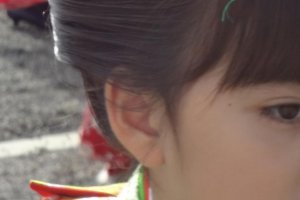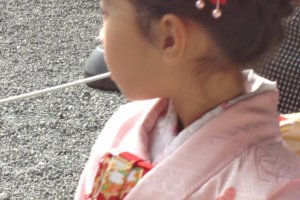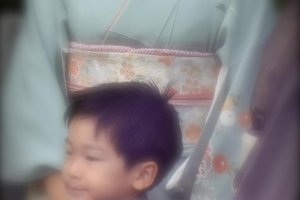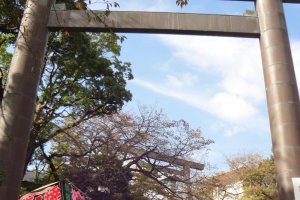You cannot see so many people who are wearing kimono in modern Japan. Are you disappointed? Yes, I understand your feeling. If you want to see a lot of people wearing kimono in their real life, you actually need to go to special places on special days, because the kimono has become ‘special’ even for Japanese people nowadays.
Four main opportunities for kimono viewing
There are four main chances to see people wearing kimono: New Year’s (roughly January 1st - 3rd), Coming of Age Day for 20 year-olds (the second Monday in January), at various summer Fireworks Festivals in July and August (often along a beach or riverbank) and the Seven-Five-Three Celebration for children (roughly mid-November).
Seven-Five-Three Celebration
Among the celebrations mentioned above, the Seven-Five-Three Celebration (7-5-3) is the easiest chance for travelers to Japan to observe people in kimono. The weather is still nice and warm, it’s not such a busy time of year (i.e. not crowded), and cute kids and their beautiful mothers both wear kimono at the same time. Girls who are three or seven years old, and boys who are three or five years old are celebrated on the day.
Originally, the Seven-Five-Three Celebration was held on November 15th. But these days, people are not particular about the exact day. We can see them either on weekends or national holidays in November.
Iseyama Shrine
There is a nice and convenient shrine to see people wearing kimono for 7-5-3 in Yokohama central. It is the Iseyama Shrine. The best time to go is around 11 o’clock in the morning or 1-3 o’clock after lunch.
To reach the shrine, get off the train at JR Sakuragi-cho Station. When you come out the exit, turn right; away from Minato Mirai. There will be a big road with a lot of car traffic in front of you. This is Route 16. Turn right and walk along Route 16 for five minutes or so until you reach Momiji-zaka, the first traffic light you come to after leaving the station. There will be a walkway that goes under the train tracks on your right, but you are not going that way: Instead, cross over the street at the traffic light, heading towards the slope. Once you cross the street, you will quickly cross a small bridge. Turn left at the second side street you come to. It curves gently to the right. Within a few minutes, on the right side of the street, you will come to a stone gate and steep stairs leading up to the shrine.
By the way, you might see long stick-candies in cute colorfully decorated paper bags bought by the kids. They are called chitose-ame, meaning the desire for a life lasting 1000 years for each child. The candies are long—symbolizing a long life. And they are bright red and white—symbolizing happiness.
If you visit Iseyama Shrine on a regular day, there will probably be nobody there dressed in a kimono! But you can still feel a calm, pure and refreshing mood there because this is the house of God in Japan. I hope you will have a chance to feel the tranquility of the shrine.





































